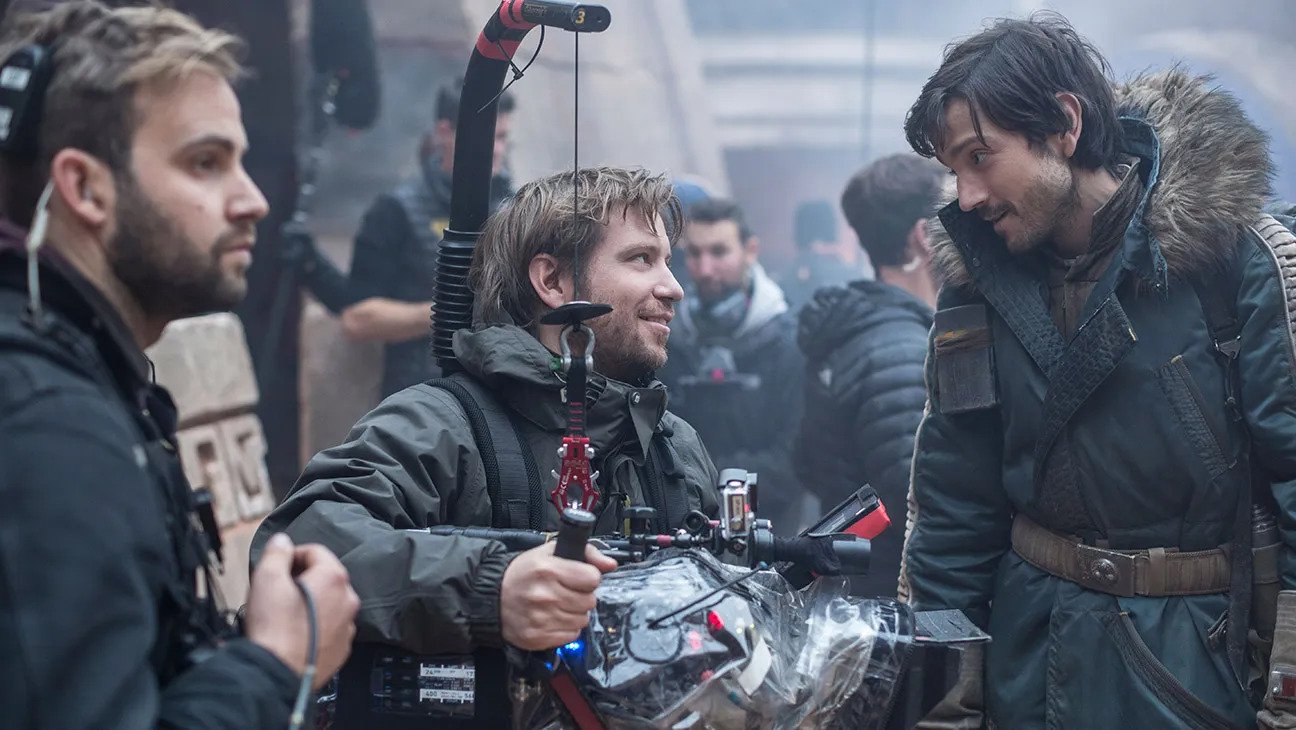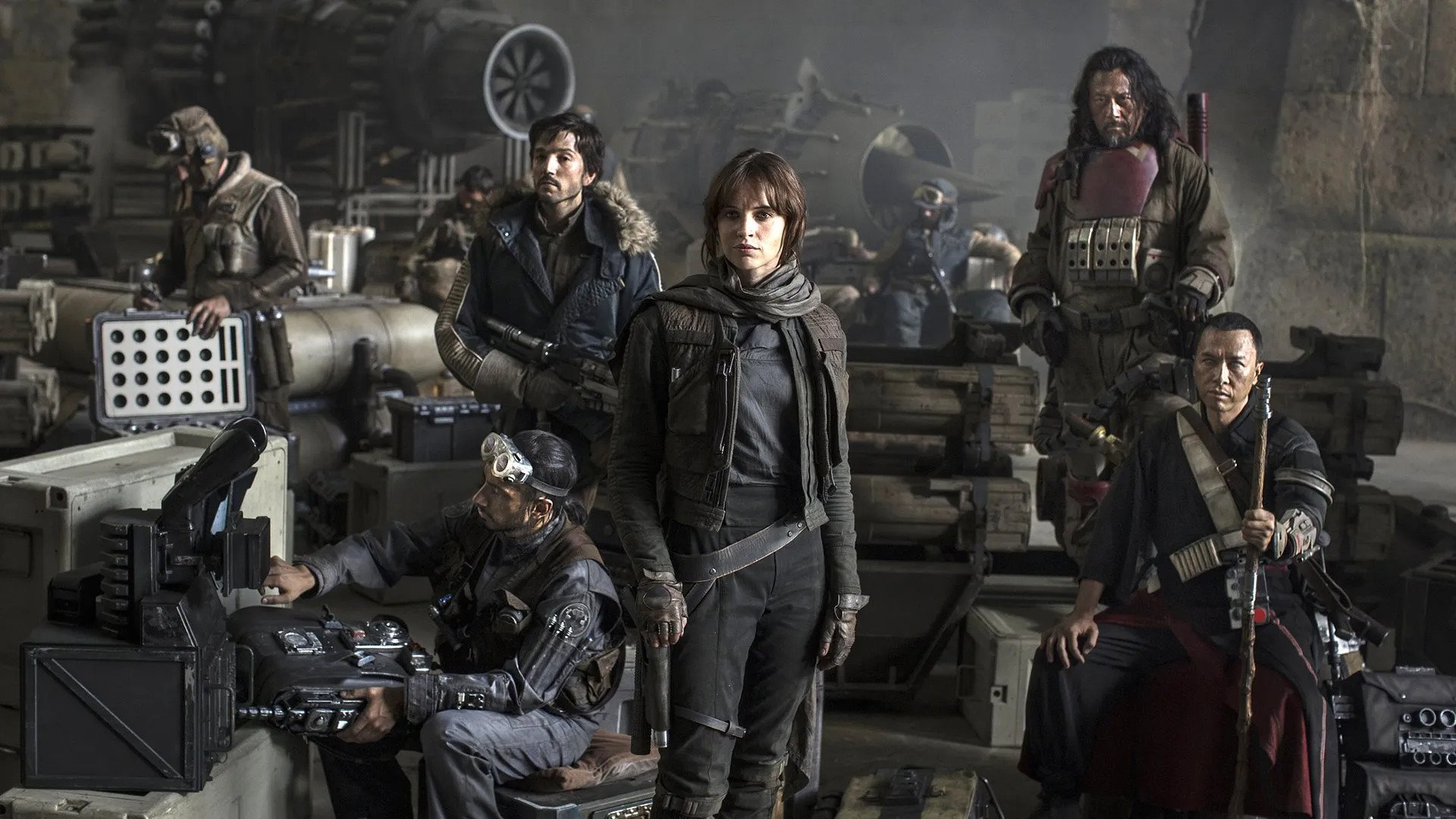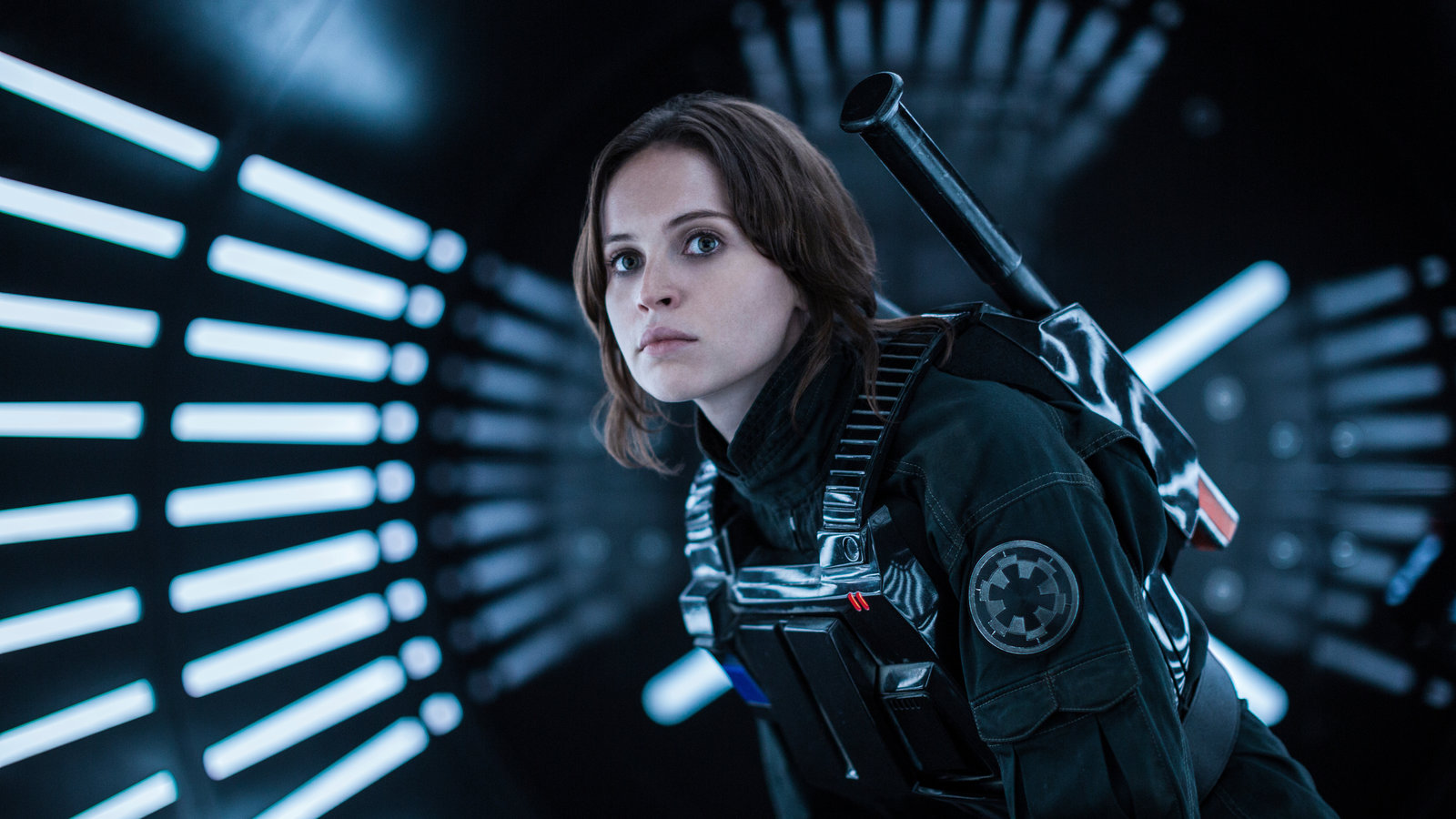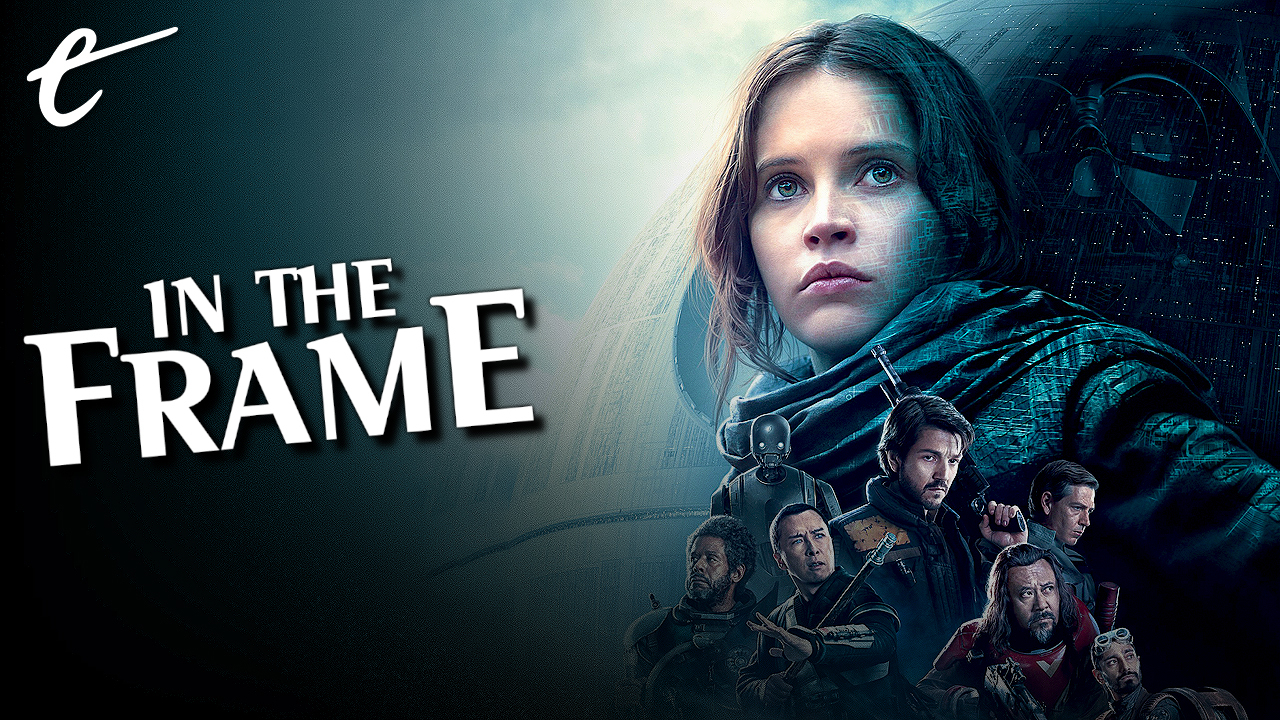Warning: The following discussion of how Rogue One: A Star Wars Story made the galaxy far, far away feel bigger than ever before contains minor spoilers.
With the release of The Creator in cinemas, it seems like a good opportunity to revisit director Gareth Edwards’ last film, Rogue One: A Star Wars Story.
To be fair, the authorship of Rogue One is somewhat contested. These days, it is easy to think of the film as the work of Tony Gilroy. After all, Disney drafted Gilroy in to make serious changes in postproduction. While not as intensive as Ron Howard’s work on Solo, these reshoots still represented a significant overhaul. Since then, Gilroy’s ties to the film have been further cemented by his work on Andor, which stands as a towering accomplishment in the franchise in its own right.
Watching Rogue One, it is definitely recognizable as part of Tony Gilroy’s larger body of work. In particular, the character of Orson Krennic (Ben Mendelsohn) is an archetypal Gilroy antagonist, a mid-level bureaucrat who inevitably gets in over his head. There are definitely the seeds of Andor characters like Syril Karn (Kyle Soller) or Dedra Meero (Denise Gough) to be found in Krennic. Like Andor, Rogue One presents a gritty and fragmented view of revolution.
Edwards has been gracious in talking about his experiences on Rogue One, but it’s clear that he doesn’t want to spend the press tour for The Creator talking about it. “Look, the only thing I can say is I was incredibly lucky,” he told Variety. “The idea of someone as privileged as me in any way implying that it was anything other than the amazing experience that it was to some extent — like, I don’t have any empathy for that person, and I don’t want to be that person either.”
Still, allowing for this, recognizing Gilroy’s contributions to Rogue One should not come at the expense of ignoring how it was shaped by Edwards as a filmmaker. Filmmaking is a collaborative process. Movies are the work of countless artists working together towards a common purpose. The beauty of art is that it can exist in multiple contexts. It is possible to situate Rogue One in terms of Tony Gilroy’s larger career arc, but that doesn’t discount its place in Edwards’ filmography.
Indeed, part of the beauty of Rogue One is the way that Gilroy and Edwards’ sensibilities integrate well. Part of this is simply structural. Edwards is a remarkable director, but his films can often seem unstructured or disorganized. Perhaps owing to Gilroy’s extensive experience as a screenwriter, Rogue One has a clear three-act structure, with each act organized around an action and dramatic set-piece on a different planet: Jedda, Eadu and Scarif. This creates a sense of mounting tension.
Related: Why Ahsoka’s Thrawn Is Called Heir to the Empire in Star Wars

However, Gilroy and Edwards also sync up quite well in their themes. Both are storytellers preoccupied with scale. For Gilroy, this tends to be abstract and systematic. In his Bourne movies and in Michael Clayton, Gilroy tends to pit his heroes against large lumbering bureaucracies with deep pockets and little humanity. For Edwards, that scale is more literal. His earlier films, Monsters and Godzilla, focused on human characters dwarfed by threats beyond their frame of reference.
Edwards’ heroes are typically presented with calamities so large that they are functionally powerless against them. Monsters originated with a simple question. “What if someone made a monster movie set years after most other monster movies end?” he recalls thinking. “When people aren’t running and screaming, but life is just going on.” There is a sense of acceptance and cosmic inevitability to Edwards’ first three films.
Edwards’ films are typically about characters presented with an enormous and existential threat to their way of life, but with no real option except to get on with getting on. Monsters and Godzilla are both about human characters just trying to get home as gigantic monsters carve a path of destruction. Even The Creator takes place in a world where artificial intelligence is so ordinary as to be mundane, and a global war has already been raging for more than half-a-decade.
The Creator is really the first of Edwards’ films to have an archetypal Hollywood protagonist, a character who can meaningfully save the world. Even Rogue One is about a bunch of characters who die providing the plot device that spurs the original Star Wars, placing them several degrees of separation from the destruction of the Death Star. Edwards’ films typically take place in worlds where the best that characters can hope to do when confronted with some new atrocity is to survive.
In this sense, Edwards is a quintessentially millennial filmmaker. His films speak to a generation of movie-goers who have endured a series of seemingly world-ending calamities from the financial crash to climate change to the pandemic and have been presented with no better option than to simply continue about their business. Indeed, Owen Gleiberman noted that Rogue One’s tale of a noble-but-doomed band of resistance fighters had a peculiar resonance after Trump’s election.
However, stepping outside of the specifical cultural context of Edwards’ work, few working directors have as profound an understanding of size and mass. To put it simply, Edwards knows how to make things look big. In an industry where blockbusters are constantly escalating in stakes and budget, that is a very useful skill. Critics and fans often talk about how “big” a given movie looks or feels, but Edwards’ blockbusters tend to feel bigger than most.
Related: Starfield Is the Combination of Star Wars and Star Trek I’ve Always Wanted

This is an approach that lends itself to Star Wars. After all, Star Wars helped to codify the modern blockbuster. It has been described, not unreasonably, as “modern-day American mythology.” The original Star Wars was the highest-grossing movie of all-time until Titanic. The movie’s characters and dialogue has imprinted itself upon pop culture, to the point that people who have never seen a Star Wars movie can recognize Darth Vader (David Prowse, James Earl Jones) or know about “the Force.”
This sense of magnitude was reflected within the narrative itself. The original Star Wars promised its audience an entire galaxy of adventure, with a cantina populated by aliens who could each have their own back story (and most of whom did). There were references to countless off-screen characters and events. There was the suggestion of a complex shared history. In the original Star Wars, that galaxy far, far away seemed impossibly vast and incredibly deep.
Of course, familiarity has numbed that. Particularly in recent years, the Star Wars universe has started to feel much smaller. It is largely populated by characters and organizations that the audience already recognized. The galaxy far, far away seems to consist of maybe seventy named characters who all move in the same circles and constantly cross paths with one another. Movies like Solo seem to exist largely so the audience can point at things that they recognize.
The greatest accomplishment of Rogue One is that it manages to take a host of familiar Star Wars iconography and imbue it with a sense of scale. On paper, the idea of a movie built around the theft of the Death Star plans feels like the height of fan-service, and the movie’s third act set piece showcasing Darth Vader (Spencer Wilding, James Earl Jones) is certainly that. However, it is to Edwards’ credit that he manages to take that premise and make it feel exciting and new.
After all, the Death Star is one of the most familiar images in the entire Star Wars franchise. The original Star Wars is built around it, and the idea was apparently so appealing to the Empire that they doubled down on it for Return of the Jedi. The Death Star trench run is a fixture of Star Wars video games, and the superweapon even made a short cameo towards the end of Revenge of the Sith. It is a challenge to take something so familiar and make it seem threatening.
After decades of over-exposure, Rogue One makes the Death Star seem truly alien. In the original Star Wars, the characters mistake the Death Star for a moon. Rogue One films it as such. The Death Star casts a long shadow over the surface of Jedda, where it blocks the sun to create a solar eclipse. On Scarif, it hangs in the bright blue sky like a moon visible behind clouds. On the bridge of Governor Tarkin’s (Guy Henry, Peter Cushing) Star Destroyer, the Death Star takes up the entire viewport.

Edwards is very good at using the audience’s sense of special awareness to convey this scale, often placing familiar objects next to one another to create a sense of relative size. In the sequence where he introduces the Death Star, he begins by focusing on a TIE Fighter, an object that is relatively small. That Fighter is then dwarfed by a Star Destroyer. The Star Destroyer is then dwarfed by the Death Star. Even among these gigantic things, there is a clear order of magnitude.
Edwards uses the cinematic language of Star Wars to convey this enormity. The first Star Wars opens with a camera tilt downwards to reveal a planet and a moon. In Rogue One, Edwards’ repeatedly employs the oppose technique, tilting upwards. He starts with a wide shot, such as Cassian (Diego Luna) and Jynn (Felicity Jones) at Jedda, establishing scale. He then tilts up, as if the frame cannot capture the enormity of the image. Above them, a city carved in rock. Above it, a Star Destroyer.
Some of Edwards’ skill might be down to his professional background. Before becoming a director, Edwards worked as a special effects engineer. He is famously hands-on with his crews, personally operating the camera on The Creator. As a result, there is a tactility to his filmmaking that distinguishes him from many of his contemporaries. Edwards understands how to use both visual effects and framing in harmony for maximal impact.
Rogue One was always going to be a challenge for Star Wars. It was the first live action film outside the “Skywalker” Saga and the first time that two Star Wars films had been be released in consecutive years. There was a very real possibility that Rogue One could devalue the brand, reduce Star Wars from an American mythology to just another franchise. This is arguably what eventually happened with Solo, perhaps the first Star Wars live action film not to feel like an event.
It’s to Edwards’ credit that Rogue One doesn’t make Star Wars feel smaller. If anything, it makes it seem larger than it ever did before.
If you’re looking for more of Darren’s thoughts on film, check out his recent In the Frame on how Edwards’ The Creator is an allegory for Vietnam War films, and why he’s got mixed feelings about the result.






Published: Oct 2, 2023 11:00 am